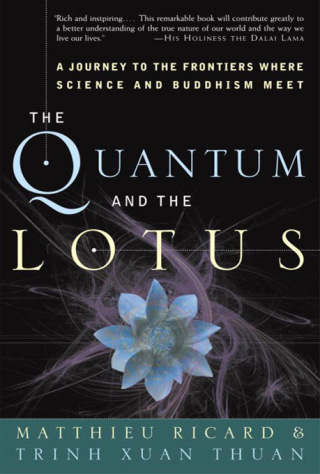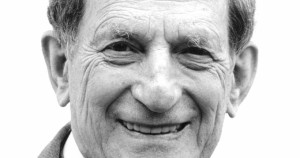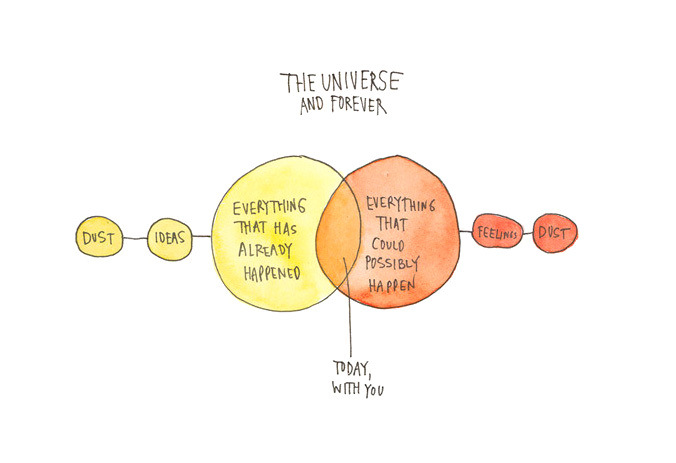Physicist David Bohm and Buddhist Monk Matthieu Ricard on How We Shape What We Call Reality
SCIENCE - SPIRITUALITY, 28 Sep 2015
Maria Popova, Brain Pickings – TRANSCEND Media Service
“Reality is what we take to be true. What we take to be true is what we believe… What we believe determines what we take to be true.”
 We never see the world exactly as it is — our entire experience of it is filtered through the screen of our longings and our fears, onto which project the interpretation we call reality. The nature of that flickering projection has captivated the human imagination at least since Plato’s famous Allegory of the Cave. Philip K. Dick was both right and wrong when, in contemplating how to build a universe, he wrote that “reality is that which, when you stop believing in it, doesn’t go away.” Reality, after all, is constructed through our very beliefs — not because we have a magical-thinking way of willing events and phenomena into manifesting, but because cognitive science has shown us that the way we direct our attention shapes our perception of what we call “reality.”
We never see the world exactly as it is — our entire experience of it is filtered through the screen of our longings and our fears, onto which project the interpretation we call reality. The nature of that flickering projection has captivated the human imagination at least since Plato’s famous Allegory of the Cave. Philip K. Dick was both right and wrong when, in contemplating how to build a universe, he wrote that “reality is that which, when you stop believing in it, doesn’t go away.” Reality, after all, is constructed through our very beliefs — not because we have a magical-thinking way of willing events and phenomena into manifesting, but because cognitive science has shown us that the way we direct our attention shapes our perception of what we call “reality.”
That’s what molecular biologist turned Buddhist monk Matthieu Ricard and Buddhist-raised astrophysicist Trinh Thuan explore in The Quantum and the Lotus: A Journey to the Frontiers Where Science and Buddhism Meet (public library) — an infinitely mind-bending conversation at the intersection of science and philosophy. The contemporary counterpart to Einstein’s conversation with Tagore, it takes apart our most elemental assumptions about time, space, the origin of the universe and, above all, the nature of reality.
In considering the constructed nature of reality, Ricard quotes from a 1977 Berkeley lecture by David Bohm (December 20, 1917–October 27, 1992), in which the trailblazing theoretical physicist offered an exquisite formulation of the interplay between our beliefs and what we experience as reality:
Reality is what we take to be true. What we take to be true is what we believe. What we believe is based upon our perceptions. What we perceive depends on what we look for. What we look for depends on what we think. What we think depends on what we perceive. What we perceive determines what we believe. What we believe determines what we take to be true. What we take to be true is our reality.
Ricard adds:
No matter how complex our instruments may be, no matter how sophisticated and subtle our theories and calculations, it’s still our consciousness that finally interprets our observations. And it does so according to its knowledge and conception of the event under consideration. It’s impossible to separate the way consciousness works from the conclusions it makes about an observation. The various aspects that we make out in a phenomenon are determined not only by how we observe, but also by the concepts that we project onto the phenomenon in question.
*****
Complement this fragment of the wholly fantastic The Quantum and the Lotus with Alan Watts on what reality really means and Simone Weil on science and our spiritual values, then revisit Ricard’s conversation with his father, the great French philosopher Jean-François Revel, about the nature of the self.
_______________________________
Brain Pickings is the brain child of Maria Popova, an interestingness hunter-gatherer and curious mind at large obsessed with combinatorial creativity who also writes for Wired UK and The Atlantic, among others, and is an MIT Futures of Entertainment Fellow. She has gotten occasional help from a handful of guest contributors.
Go to Original – brainpickings.org
DISCLAIMER: The statements, views and opinions expressed in pieces republished here are solely those of the authors and do not necessarily represent those of TMS. In accordance with title 17 U.S.C. section 107, this material is distributed without profit to those who have expressed a prior interest in receiving the included information for research and educational purposes. TMS has no affiliation whatsoever with the originator of this article nor is TMS endorsed or sponsored by the originator. “GO TO ORIGINAL” links are provided as a convenience to our readers and allow for verification of authenticity. However, as originating pages are often updated by their originating host sites, the versions posted may not match the versions our readers view when clicking the “GO TO ORIGINAL” links. This site contains copyrighted material the use of which has not always been specifically authorized by the copyright owner. We are making such material available in our efforts to advance understanding of environmental, political, human rights, economic, democracy, scientific, and social justice issues, etc. We believe this constitutes a ‘fair use’ of any such copyrighted material as provided for in section 107 of the US Copyright Law. In accordance with Title 17 U.S.C. Section 107, the material on this site is distributed without profit to those who have expressed a prior interest in receiving the included information for research and educational purposes. For more information go to: http://www.law.cornell.edu/uscode/17/107.shtml. If you wish to use copyrighted material from this site for purposes of your own that go beyond ‘fair use’, you must obtain permission from the copyright owner.
3 Responses to “Physicist David Bohm and Buddhist Monk Matthieu Ricard on How We Shape What We Call Reality”
Read more
Click here to go to the current weekly digest or pick another article:
SCIENCE - SPIRITUALITY:


Great work Antonio. Popova is a national internet treasure and the link to the conversations between Einstein and Tagore is outstanding. Thanks again for your exceptional work.
Many thanks to you dear Andy, for taking the time. I agree about Maria; she is outstanding.
Stay well.
Antonio
Check out the links at the bottom of the article to Watts, Weil and Revel. All are excellent.